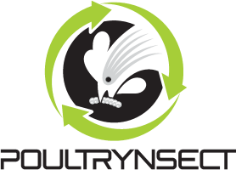Background
Background
The use of insects as feed ingredients is today very dynamic and fast-moving issue, with a great amount of papers being published each year. The huge interest for this sector in the last 10 years, has led to the authorization of insect processed animal proteins (PAPs) in feed for farmed fish in 2017 [Reg. (EU) 2017/893]. For other livestock (poultry, pigs) the “feed ban” [Reg .(EC) 999/2001] still limit the use of insect PAPs but the rule could be soon revised (IPIFF, 2019). Some insect species, in particular the black soldier fly (Hermetia illucens -HI) are interesting not only because of their nutritional profile that is rich in proteins, essential amino acids, energy, macro and micronutrients, but also because of their ability to bio-convert a wide range of organic side streams (Wang & Shelomi, 2017). The possibility to use or to upgrade food waste for animal feed purposes using insects, is a perfect example of how a system based on the principles of circular economy can be constructed. In Europe live insects (and among them HI) do not withstand to the “feed ban” and are approved for poultry feeding [Reg (EU) 2017/1017, Part C, 9.16.1].
Slow growing chickens are of great importance for organic high value local production. Respecting the regulation on organic production, they are reared in non-cage systems in flock with indoor (maximum 10 animals /m2, with no more of 21 kg of live weight / m2) and outdoor (4 birds / m2) areas. The total usable area of poultry house for meat production of any single unit shall not exceed 1600 m2 (Berg, 2002). The inability of chicken to express their natural behavior can result in aggressive behavior and increased pecking. Under organic regulation, trimming of beaks is not allowed increasing feather damages. Outdoor access enable birds to express their natural behavior. Insects are part of the natural diet of poultry and, when in outdoor conditions, birds are naturally foragers of live insects spending about 35% of their time searching and eating insects (de Vries, 2000). By moving to hide into the litter live insect attract the birds diverting their attention from their mates (Star et al., 2020). Thus, feeding live insects chicken not only provide nutrients but also has positive effects on animal health and welfare (Sossidou et al., 2015). Spreading live HI larvae in the litter of laying hens, Ruis et al (2018) reported an increase of activity and foraging behavior, and a decrease of damage from injurious pecking behavior. Feeding HI live larvae to young turkey poults, Veldekamp et al (2019) offered a natural substrate to peak at and distract the birds’ attention from pecking at each other. Feeding live HI larvae resulted in reduced feather pecking on back and tail base.
Similar results were recently reported by Star et al. (2020) who investigated the effects of dispensing live HI larvae on top of a soy-free diet to laying hens on production performance, behavior and welfare. Hens fed HI diet showed a reduction in feed intake and feed conversion rate, while no differences were recorded for the other performances parameters or egg quality. Moreover, hens fed live insects reported better feather condition vs hens fed commercial control diet, and behavioral observations showed that larvae provision influenced the hens’ activity.
Despite many research investigated the use of insect-derived meals as feed ingredients (Gasco et al., 2019), limited is the number of projects and relative papers quantifying the effects of feeding live insect larvae to poultry on growth performances, behavior and health. Poultrynsect project is thus aimed at providing novel evidences and operating protocols regarding the use of live insects in slow and intermediate growing chickens for organic meat production.
